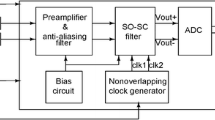Abstract
The cardiac defibrillator is the most commonly used instrument in hospital, ambulance and industry for resuscitation after electrocution or cardiac arrest. Defibrillation involves the application of a short pulse of electric current (4–10ms) through the chest of the patient; it has been demonstrated that the required energy is a function of the patient's weight. A knowledge of the performance of a defibrillator is essential; front panel meters, although calibrated in joules, read capacitor voltage only, and a loss of capacitance is not easily detected in use. We have had personal experience of this loss on several occasions. Commercial defibrillator testers employ analogue circuitry and are no more reliable in calibration than defibrillators themselves. This paper discusses the design of a microprocessor-based defibrillator analyser which has a performance far superior to existing testers. It gives an absolute digital readout of the energy delivered into a standard 50 Ω load, the peak defibrillating voltage, and the rise time of the defibrillator output wave. Facilities are also provided for storage of the defibrillator output waveform, so that the profile can be examined on an oscilloscope.
Similar content being viewed by others
References
Clare, C. R. (1973)Designing logic systems using state machines, McGraw-Hill, New York.
Flynn, C. J., Fox, F. N. andBourland, J. D. (1972) Indicated and delivered energy by d.c. defibrillators.J.A.A.M.I.,6, 323–324.
Geddes, L. A., Tacker, W. A., Rosborough, J., Cabler, P., Chapman, R. andRivera, R. (1976) The increased efficiency of high energy defibrillation.Med. & Biol. Eng.,11, 330–333
Lown, B., Newman, J., Amarasingham R. andBerkovits, B. V. (1966) Comparison of alternating current with direct current electroshock across the close chest.Am. J. Cardiol.,10, 223–233.
Peleska, B. (1966) Optimal parameters of electrical impulses for defibrillation by condenser discharges.Circulation Research,18, 10–16.
Tacker, W. A., Galioto, F. M., Giulani, E., Geddes, L. A. andMcNamara, D. G. (1974) Energy dosage for human transchest electrical ventricular defibrillation.N. Eng. J. Med.,290, 214–215.
Author information
Authors and Affiliations
Rights and permissions
About this article
Cite this article
Sum, C.M.A., Dewhurst, D.J. Digital cardiac defibrillator tester. Med. Biol. Eng. Comput. 17, 710–714 (1979). https://doi.org/10.1007/BF02441550
Received:
Accepted:
Issue Date:
DOI: https://doi.org/10.1007/BF02441550




